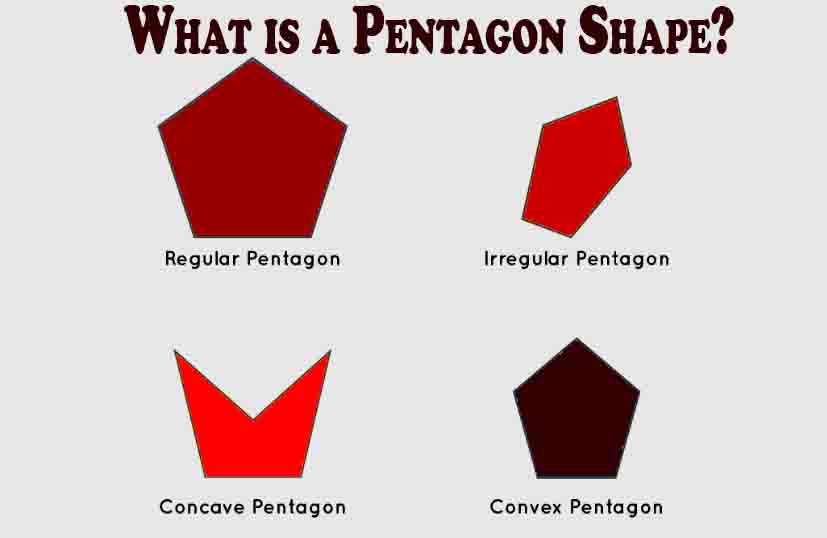The Pentagon is a polygonal figure that has five sides. It is the second simplest polygonal figure after the square. The Pentagon has a long history in geometry and has been used in art and architecture for centuries. In mathematics, the Pentagon is used as an example of a regular polygon with an odd number of sides.
In this post, we describe the Pentagon shape, which is one of the most popular shapes in design. We also describe what you should be aware of when using this shape.
Table of Contents
Parts of a Pentagon Shape
Side: A side refers to any of the three parts formed by the horizontal lines extending from the points where the top and bottom curves meet. The figure shown is a pentagon. There are a total of 5 sides in this figure. Line segment ‘a’ shows one of the 5 sides.

Vertically: Vertical edges make a shape. A corner is simply a vertex, or a point that forms a 90° angle. In this case, the four vertices of your notebook make up a 90° angle. The image above represents the five vertices of the shape in the form of a matrix. Each cell of the matrix is either ‘1’ or ‘0’.
Diagonal: The diagonal of a hexagon is the line that connects two vertices on opposite sides of a hexagon. It passes through the center of each face of the hexagon. Diagonals are used to connect any two non-adjacent corners or vertices of a 2D figure using a straight line. You should try to use the letter “d” in this sentence for your reference.
Interior angle: An interior angle of 90 degrees or less is known as an acute angle. A figure made by two straight lines meeting is called a triangle, and the angle formed between them is called an acute or The internal angle of a triangle lies within the figure. Angles marked in green in the below image show the inside of the house from the outside.
Exterior angles: It refers to the angle formed by two adjacent sides of the shape on the outside. The outside angle is the measure of the angle on a particular vertex but on the outside. On the above drawing, all the angles marked in blue are exterior angles.
Types of Pentagon
There are four pentagonal shapes, depending on their sides, angles, and vertices.
- Regular
- Irregular
- Convex
- Concave
Regular and irregular pentagons
When the 5 sides are the same length and all the 5 angles have the same measure, it’s a regular pentagon. Irregular means when the sides and angles aren’t equal. The regular pentagon has a symmetry that makes it very simple to understand. If you look at it from any side, it will always look the same. In general, however, the sides of a regular polygon are equal.
Convex and concave pentagons
An upside down pentagon is one in which all its vertices point outwards. A pentagon with one edge pointing in is a concave one, while one with no edges pointing in is a convex one.
Properties of a Pentagon
There are several properties that are associated with a pentagon. Some of them are described below. Length and Width
If you look at the perimeter of a pentagon, you’ll notice that it has a width that is five times as wide as its length. This means that a pentagon has an area that is five times larger than that of a rectangle with the same perimeter.
The ratio between the length and the width is five to one. It also means that the diagonal of a pentagon is five times as long as the side lengths. When the pentagon is regular, you will see that its angles are equal. This means that the diagonals are parallel. Symmetry
The most important property of a pentagon is that it has 5-fold symmetry. This means that it looks the same from any direction. All angles are the same size. One way of looking at it is that it has no asymmetry. This can be seen by looking at it from any angle. It appears to be symmetrical.
Pentagons are one of the shapes that use for a best logo design. Their symmetrical shape is visually pleasing and easy to remember. They can be used to represent a wide variety of businesses, from security firms to government agencies. Pentagon logos are also versatile, able to be adapted to any color scheme or brand identity.
